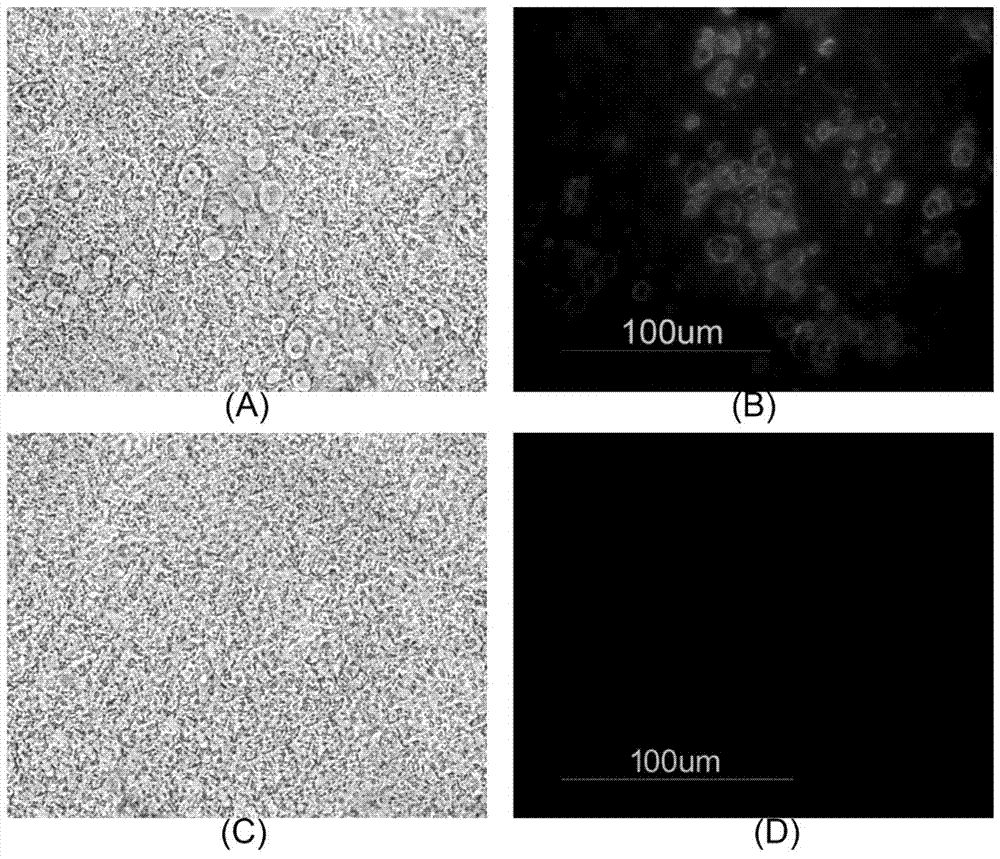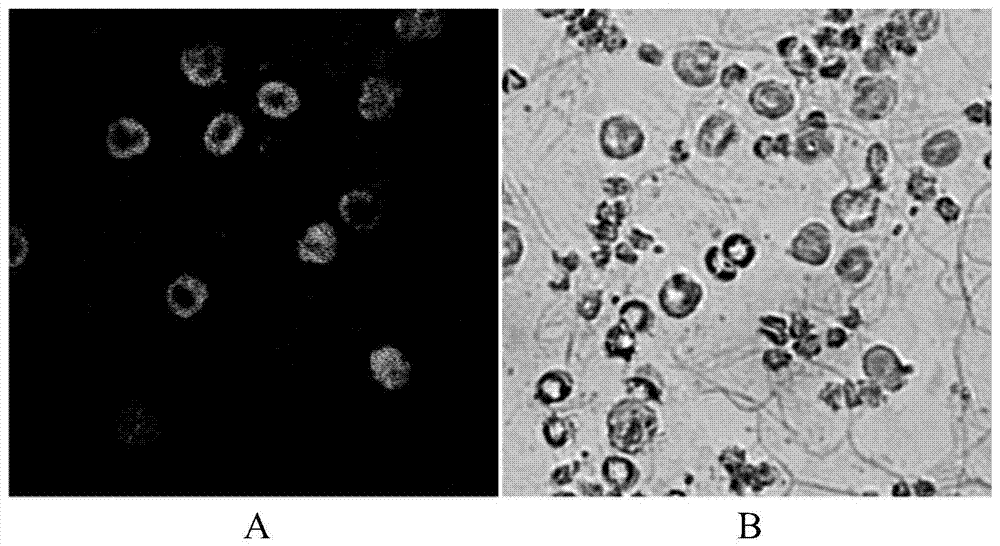Antibody for detecting infectious spleen and kidney necrosis virus and its preparation and application
A spleen and kidney necrosis virus, infectious technology, applied in the field of biological immunity, can solve the problems of limited promotion and use, high false positive rate, and achieve the effect of simple operation and good specificity
- Summary
- Abstract
- Description
- Claims
- Application Information
AI Technical Summary
Problems solved by technology
Method used
Image
Examples
Embodiment 1
[0045] An antibody for the detection of infectious spleen-kidney necrosis virus obtained by:
[0046] 1) Obtaining polypeptide fragments: Using Antigenic and DNAstar / protean and other antigenic determinant analysis software to analyze the membrane protein VP23R encoded by infectious spleen and kidney necrosis virus (ISKNV) strain (NCBI accession number: AF371960) The amino acid sequence was analyzed, and an epitope with 14 amino acid residues was screened out: ISKNV-23P8 (SEQ ID NO: 1); bioinformatics analysis showed that the homology of this polypeptide sequence with other viruses of the genus Iridovirus was relatively high. Low, no more than 5 consecutive amino acids consistent;
[0047] 2) Preparation of anti-VP23R protein antibody
[0048] ①Synthesizing the polypeptide: using the ISKNV-23P8 polypeptide fragment obtained in step 1 as a template, using biological methods to synthesize the polypeptide, and then purifying the synthesized polypeptide by HPLC to a purity of mor...
Embodiment 2
[0065] A non-diagnostic printing immunofluorescence rapid detection method for infectious spleen and kidney necrosis virus infection, comprising the following steps:
[0066] 1) Take the spleen tissue of diseased fish suspected of ISKNV infection, cut the spleen with a razor blade, print the fresh section on a siliconized or poly-lysine-treated glass slide, and air-dry;
[0067] 2) Cover and fix with 4% paraformaldehyde solution at room temperature for 3 minutes;
[0068] 3) block with 1% bovine serum albumin (BSA) PBST solution at room temperature for 20 minutes;
[0069] 4) Dilute the rabbit anti-ISKNV-23P8 polyclonal antibody with PBST at a ratio of 1:1000, incubate at room temperature for 30 minutes, and wash thoroughly with PBST for 3 times;
[0070] 5) Add FITC fluorescently labeled goat anti-rabbit IgG secondary antibody (KLH) and incubate for 20 minutes, then wash with PBST three times;
[0071] 6) Seal the slide with a cover glass, detect it with an immunofluorescen...
Embodiment 3
[0073] A non-diagnostic printing immunofluorescence rapid detection method for infectious spleen and kidney necrosis virus infection, comprising the following steps:
[0074] 1) Take the spleen tissue of diseased fish suspected of ISKNV infection, cut the spleen with a razor blade, print the fresh section on a siliconized or poly-lysine-treated glass slide, and air-dry;
[0075] 2) Cover and fix with 4% paraformaldehyde solution at room temperature for 10 minutes;
[0076] 3) block with 1% bovine serum albumin (BSA) PBST solution at room temperature for 10 minutes;
[0077] 4) Dilute rabbit anti-ISKNV-23P8 IgG with PBST at 1:3000, incubate at room temperature for 50 minutes, and wash thoroughly with PBST for 3 times;
[0078] 5) Add FITC fluorescently labeled goat anti-rabbit IgG secondary antibody (KLH), incubate for 40 minutes, and wash three times with PBST;
[0079] 6) Seal the slide with a cover glass, detect it with an immunofluorescence microscope, and observe the flu...
PUM
 Login to View More
Login to View More Abstract
Description
Claims
Application Information
 Login to View More
Login to View More - R&D
- Intellectual Property
- Life Sciences
- Materials
- Tech Scout
- Unparalleled Data Quality
- Higher Quality Content
- 60% Fewer Hallucinations
Browse by: Latest US Patents, China's latest patents, Technical Efficacy Thesaurus, Application Domain, Technology Topic, Popular Technical Reports.
© 2025 PatSnap. All rights reserved.Legal|Privacy policy|Modern Slavery Act Transparency Statement|Sitemap|About US| Contact US: help@patsnap.com



